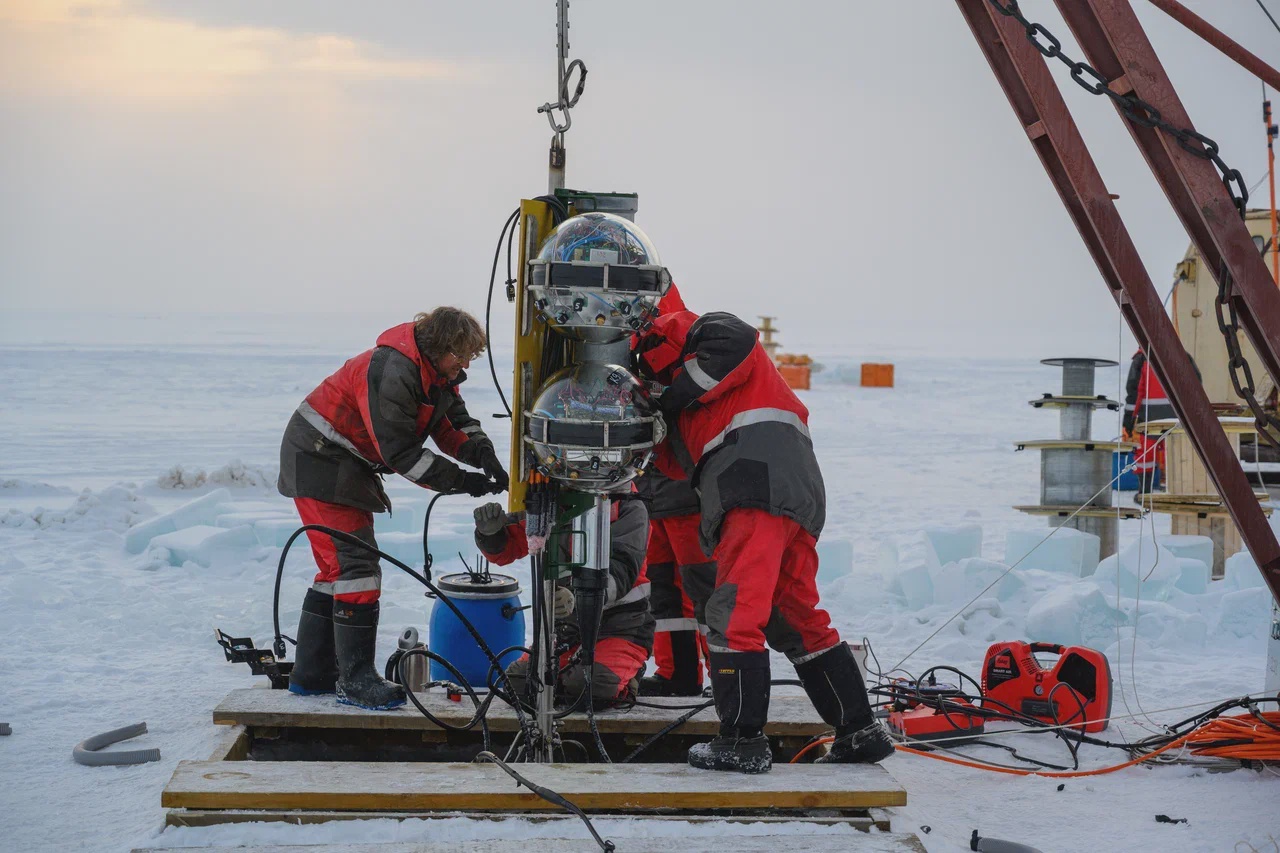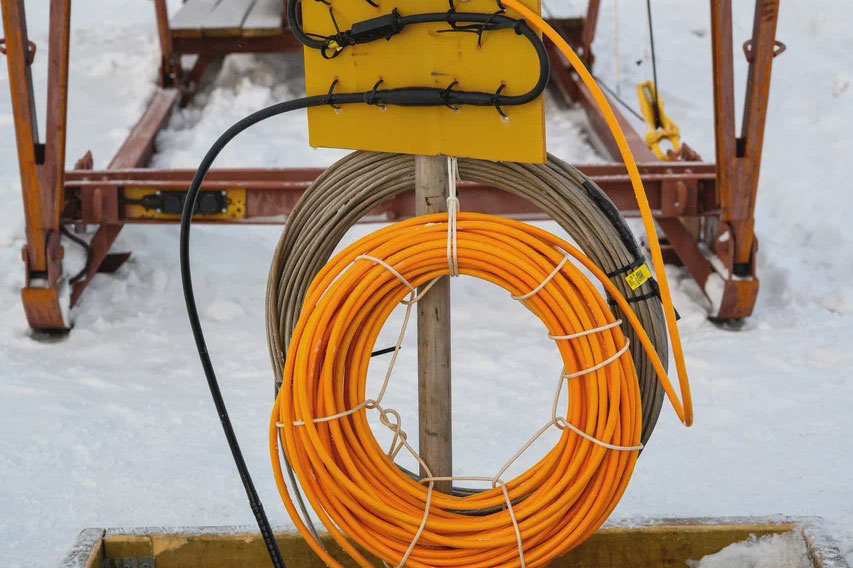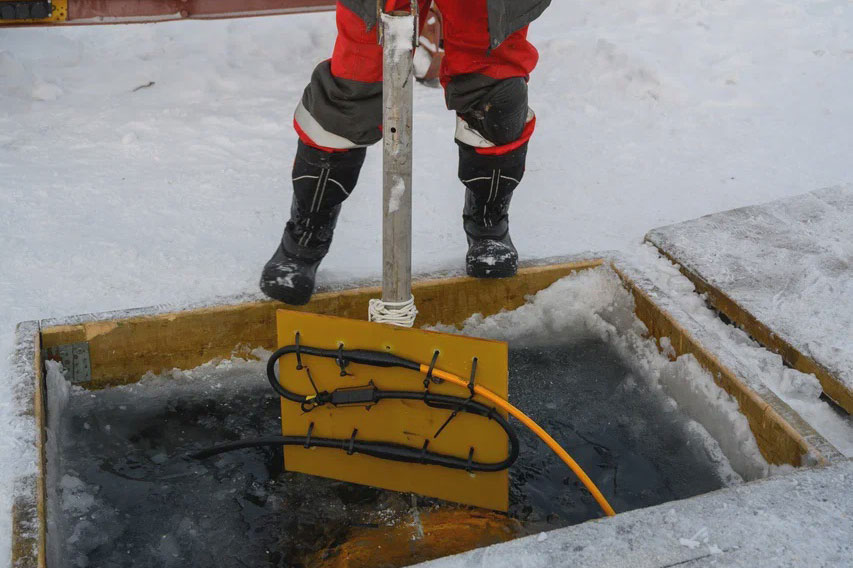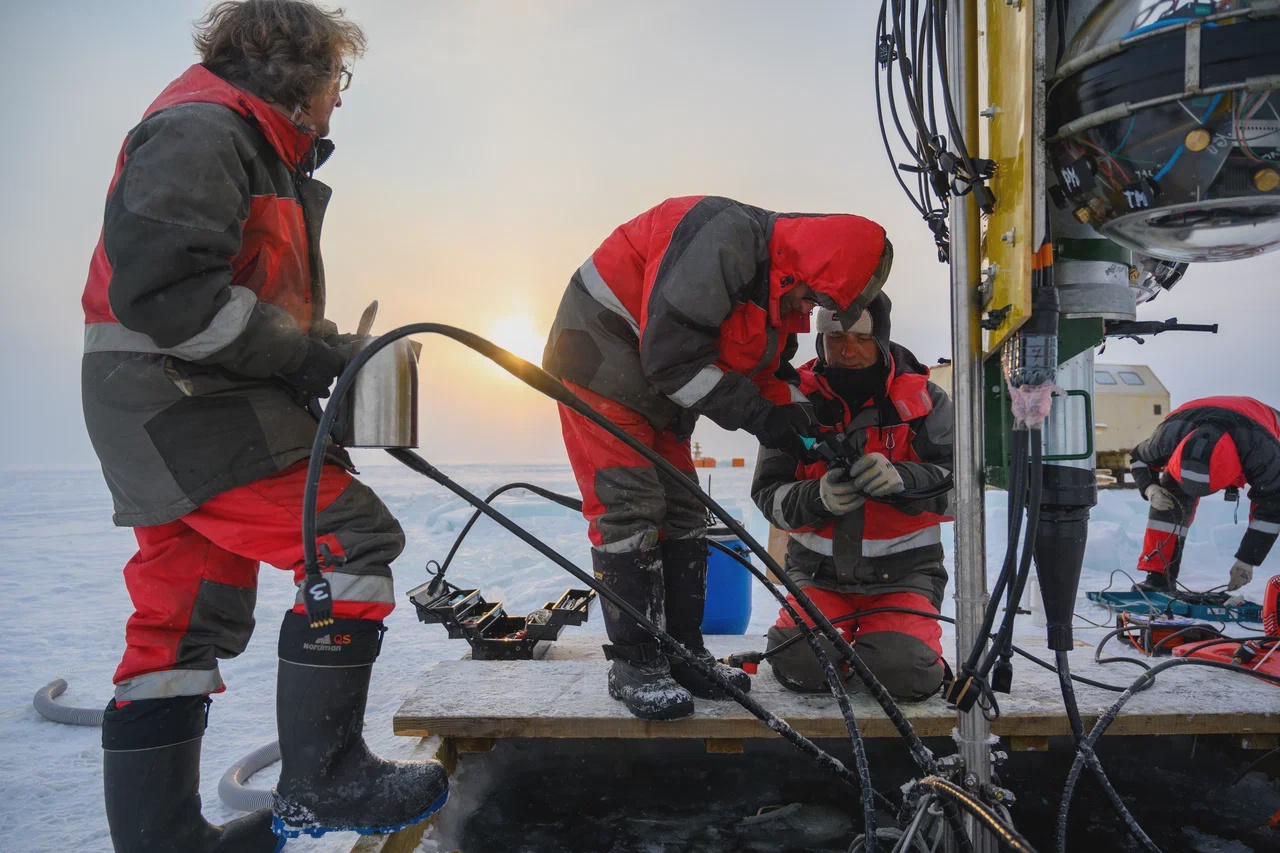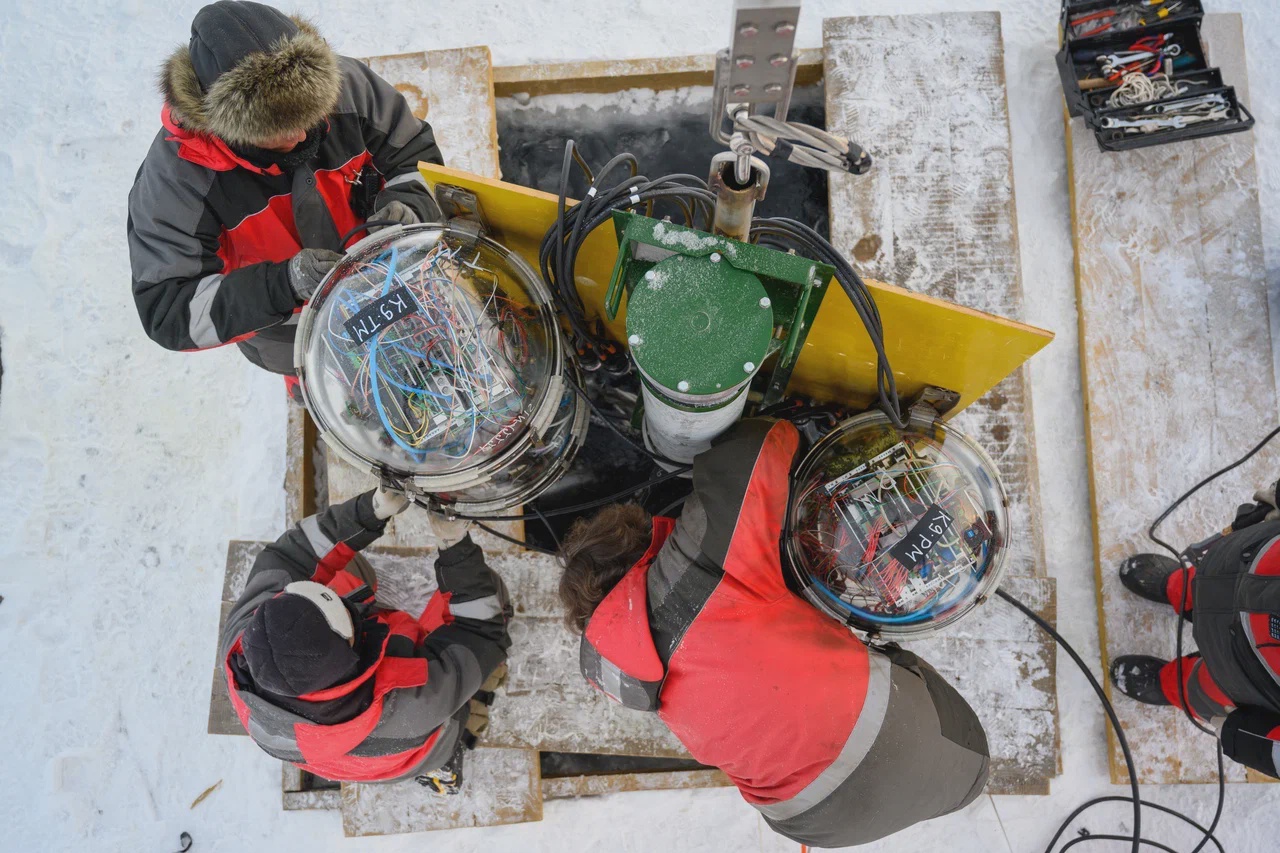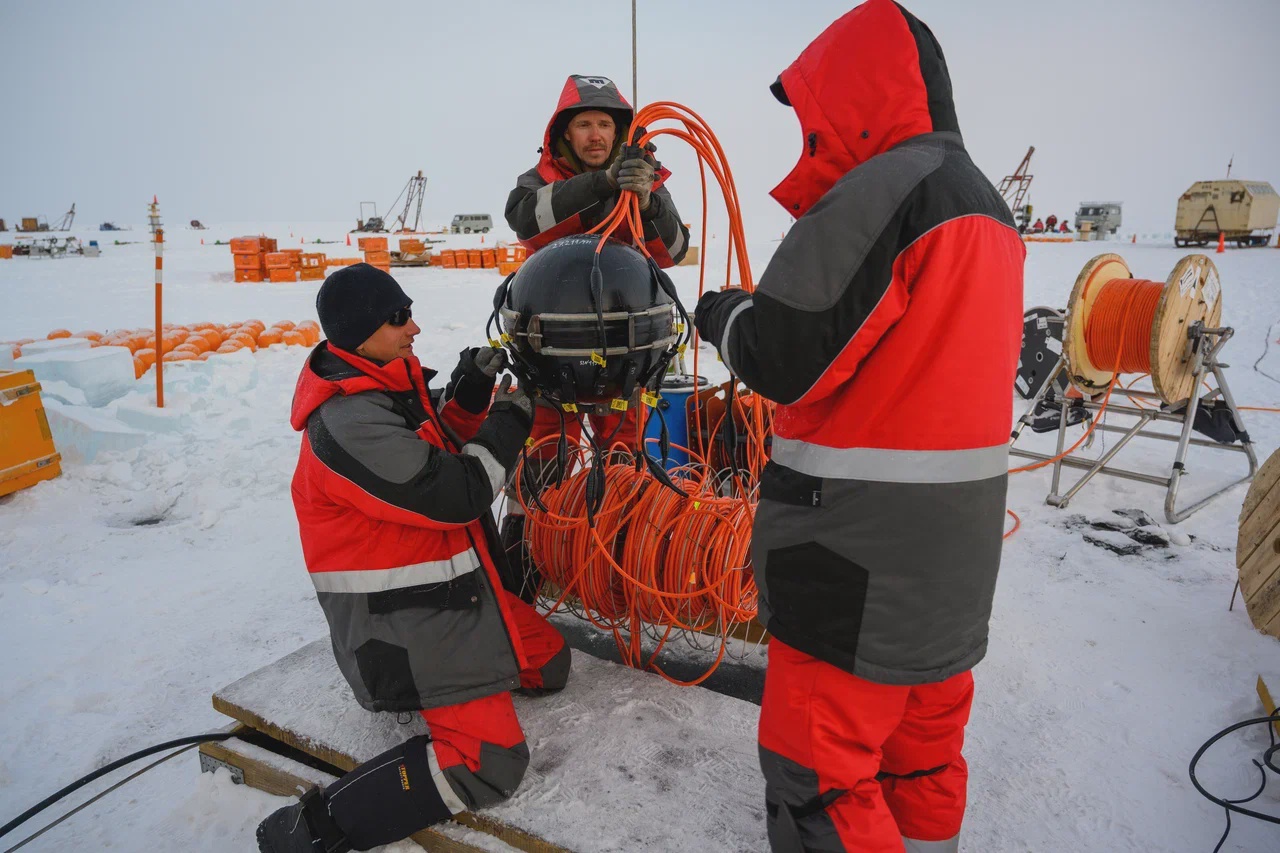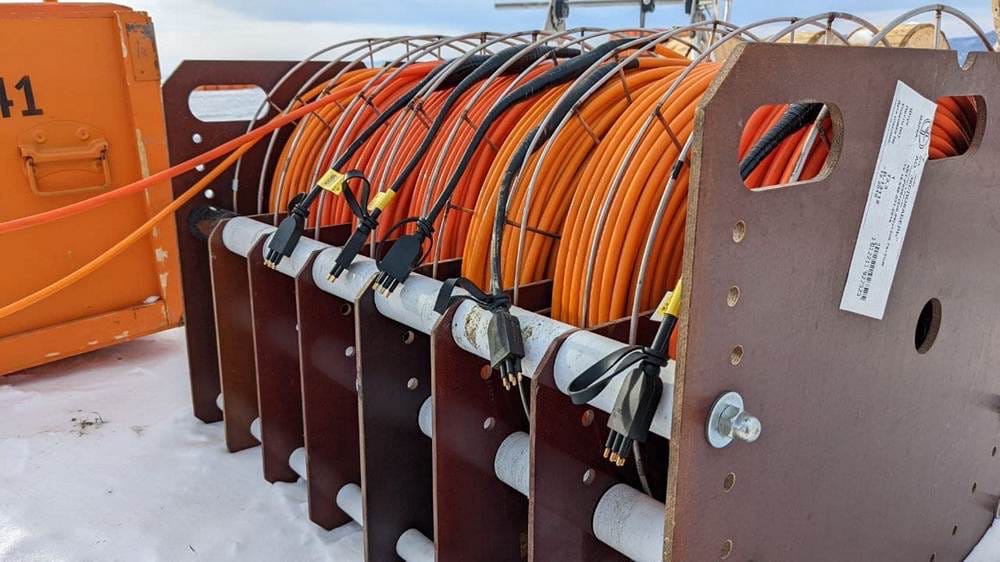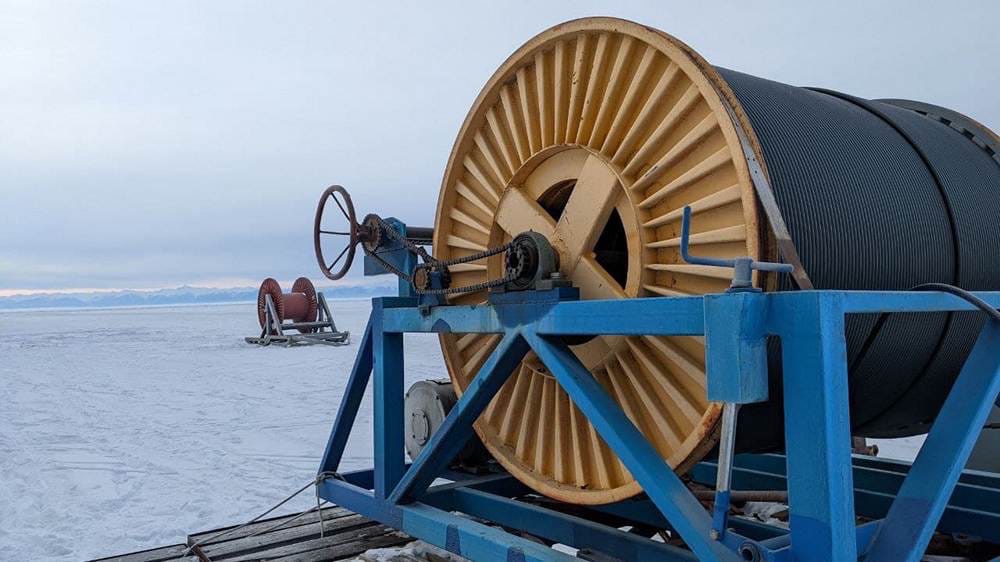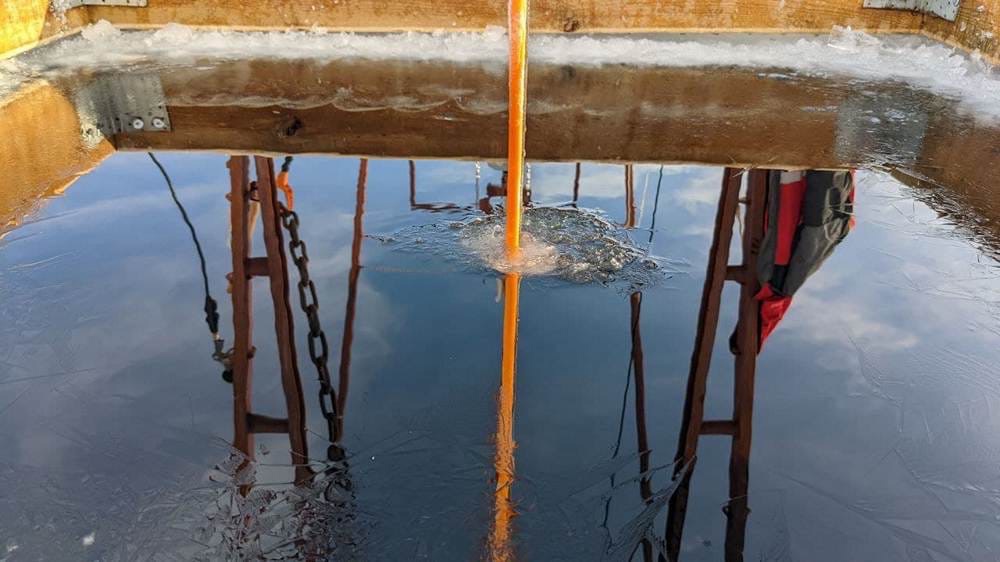News of Baikal expedition
News, 17 March 2022
The expedition on the construction of the Baikal-GVD deep-underwater neutrino telescope 2022 is underway. The expedition started in February.
To date, eight assembled strings of the ninth cluster have been tested. All of them are connected in a designed mode. Participants of the expedition have repaired the seventh cluster and have resumed collecting data.
Preparations for bottom cable laying for the tenth cluster have been completed. Specialists have laid the first 700 m of it. Cables play a key role, since the voltage is supplied through them. It is with their help that the signal is taken off. Each string includes about 4,5 km of cable. So the entire telescope, which will consist of ten clusters (eight strings each) upon the completion of the expedition, will have about 360 km of cable, excluding the lines connecting the facility with the coast.
Another significant element of the neutrino telescope is anchors. It is the first, bottom point of each string with optical modules. Assembly of strings starts with their installation. Specialists fill the anchors with a cargo (rails), weight them, and send under the ice. The anchor weighs 1,060 kg. This is the minimum necessary weight to hold a string.
Within two months of the expedition, the Baikal-GVD collaboration is going to install two new clusters of optical modules, repair and modernise already installed ones, as well as continue working on the development of the data transmission system through optical lines inside the facility.
Launching Baikal expedition-2022, 17.02.2022
About Baikal expedition, 02.03.2022
About Baikal expedition, 12.04.2022
The Baikal-GVD Neutrino Telescope is being constructed by the efforts of the international collaboration with the leading role of the RAS Institute for Nuclear Research ( Moscow), the initiator of the experiment and the founder of the field “neutrino astronomy” in the world, and the Joint Institute for Nuclear Research ( Dubna). In total, more than 70 scientists and engineers from eleven research centres in Russia, Germany, Poland, the Czech Republic, Slovakia, and Kazakhstan take part in the project.
